Picturesque Georgia
{{hitsCtrl.values.hits}}
13 June 2016 01:17 pm
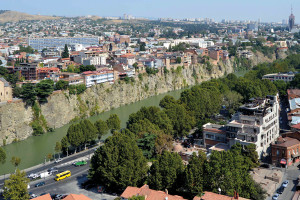 By Shehara Rizly
By Shehara Rizly
Located between Eastern Europe and West Asia, Georgia is currently one of the most visited holiday destinations in the world. Nestled between the Greater Caucasus and Lesser Caucasus mountain ranges, it is bounded to the west by the Black Sea, to the north and northeast by Russia, to the south by Turkey and Armenia, and to the southeast by Azerbaijan. The capital and largest city is Tbilisi.
Georgia is a member of the Council of Europe, OSCE and Eurocontrol; since 2014, it is also part of the European Union's Free Trade Area. As a developing economy, Georgia has achieved significant progress in recent years, "moving from a near-failed state in 2003 to a relatively well-functioning market economy in 2014". In 2007, the world Bank named Georgia the World's number one economic reformer, and has consistently ranked the country at the top of its ease of doing business index. According to Transparency International's 2015 report, Georgia is the least corrupt country in the Black Sea region, including all of its immediate neighbors, as well as nearby EU states. With a mixed news media environment, Georgia is also the only country in its immediate neighborhood where the press is not deemed unfree.Languages
The most widespread language group is the Kartvelian family, which includes Georgian, Svan, Mingrelian and Laz. The official languages of Georgia are Georgian, with Abkhaz official within the autonomous region of Abkhazia. Georgian is the primary language of 87.7 percent of the population, followed by 6.2 percent speaking Azerbaijani, 3.9 percent Armenian, 1.2 percent Russian, and 1 percent other languages.Climate
The climate of Georgia is extremely diverse, considering the nation's small size. There are two main climatic zones, roughly corresponding to the eastern and western parts of the country. The Greater Caucasus Mountain Range plays an important role in moderating Georgia's climate and protects the nation from the penetration of colder air masses from the north. The Lesser Caucasus Mountains partially protect the region from the influence of dry and hot air masses from the south.Population
Ethnic Georgians form about 86.8 percent of Georgia's current population of 3,713,804 (2014 census). Other ethnic groups include Abkhazians, Armenians, Assyrians, Azerbaijanis, Greeks, Jews, Kists, Ossetians, Russians, Ukrainians, Yezidis and others. The Georgian Jews are one of the oldest Jewish communities in the world. Once Georgia was also home to significant ethnic German communities, but most Germans were deported during World War II.Biodiversity
Due to its high landscape diversity and low latitude, Georgia is home to about 1,000 species of vertebrates, (330 birds, 160 fish, 48 reptiles, and 11 amphibians). A number of large carnivores live in the forests, namely Brown bears, wolves, lynxes and Caucasian Leopards. The common pheasant (also known as the Colchian Pheasant) is an endemic bird of Georgia which has been widely introduced throughout the rest of the world as an important game bird. The species number of invertebrates is considered to be very high but data is distributed across a high number of publications. The spider checklist of Georgia, for example, includes 501 species.Ananuri Castle Complex
Ananuri is a castle complex on the Aragvi River in Georgia, about 45 miles (72 kilometres) from Tbilisi. Ananuri was a castle and seat of the Eristavis (Dukes) of Aragvi, a feudal dynasty which ruled the area from the 13th century. The castle was the scene of numerous battles. In 1739, Ananuri was attacked by forces from a rival duchy, commanded by Shanshe of Ksani and was set on fire. The Aragvi clan was massacred. However, four years later, the local peasants revolted against rule by the Shamshe, killing the usurpers and inviting King Teimuraz II to rule directly over them. However, in 1746, King Teimuraz was forced to suppress another peasant uprising, with the help of King Erekle II of Kakheti. The fortress remained in use until the beginning of the 19th century. In 2007, the complex has been on the tentative list for inclusion into the UNESCO World Heritage Site program. The fortifications consist of two castles joined by a crenellated curtain wall. The upper fortification with a large square tower, known as Sheupovari, is well preserved and is the location of the last defense of the Aragvi against the Shamshe. The lower fortification, with a round tower, is mostly in ruins. Within the complex, amongst other buildings, are two churches. The older Church of the Virgin, which abuts a tall square tower, has the graves of some of the Dukes of Aragvi. It dates from the first half of the 17th century, and was built of brick. The interior is no longer decorated, but of interest is a stone baldaquin erected by the widow of the Duke Edishera, who died in 1674. The larger Church of the Assumption (Ghvtismshobeli), built in 1689 for the son of Duke Bardzem is a central dome style structure with richly decorated façades, including a carved north entrance and a carved grapevine cross on the south façade. It also contains the remains of a number of frescoes, most of which were destroyed by the fire in the 18th century.Gergeti Trinity Church
It is a popular name for Holy Trinity Church near the village of Gergeti in Georgia. The church is situated on the right bank of the river Chkheri (the left tributary of the river Terek), at an elevation of 2170 meters, under Mount Kazbegi. The Gergeti Trinity Church was built in the 14th century, and is the only cross-cupola church in Khevi province. The separate belltower dates from the same period as the church itself. Its isolated location on top of a steep mountain surrounded by the vastness of nature has made it a symbol for Georgia. The 18th century Georgian author Vakhushti Batonishvili wrote that in times of danger, precious relics from Mtskheta, including Saint Nino's Cross were brought here for safekeeping. During the Soviet era, all religious services were prohibited, but the church remained a popular tourist destination. The church is now an active establishment of the Georgian Orthodox and Apostolic Church. The church is a popular waypoint for trekkers in the area, and can be reached by a steep 3 hour climb up the mountain, or around 30 minutes by jeep up a rough mountain trail.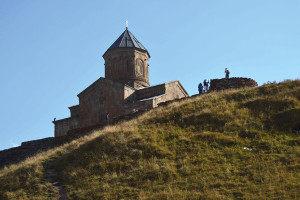
Stepantsminda : formerly Kazbegi
It is a small town in the Mtskheta- Mtianeti region of north-eastern Georgia. Historically and ethnographically, the town is part of the Khevi province. It is the center of the Kazbegi Municipality. Stepantsminda was named after a Georgian Orthodox monk named Stephan, who constructed a hermitage at this location on what later became the Georgian Military Road.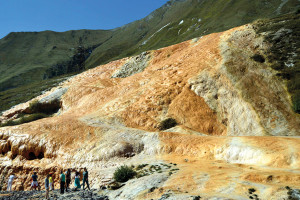
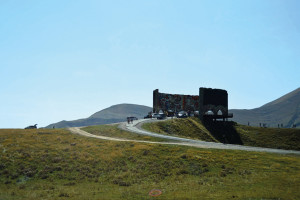
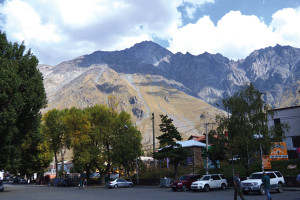
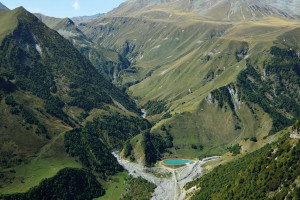
Geography and climate
The town is located along the banks of the Terek River, 157 kilometers (98 mi) to the north of Tbilisi at an elevation of 1,740 meters (5,710 feet) above sea level. Stepantsminda’s climate is moderately humid with relatively dry, cold winters and long and cool summers. The average annual temperature is 4.9 degrees Celsius. January is the coldest month with an average temperature of -5.2 degrees Celsius while July is the warmest month with an average temperature of 14.4 degrees Celsius. The absolute minimum recorded temperature is -34 degrees Celsius and the absolute maximum is 32 degrees Celsius. Stepantsminda’s average annual precipitation is 790 mm. (31.1 inches). The town is dominated by large mountains on all sides. The most notable mountain of the region, Mount Kazbek, lies immediately to the west of the town. The second most prominent peak, Mount Shani, rises to an elevation of 4,451 meters (14,600 feet) above sea level, 9 kilometers to the east of Stepantsminda. The town is located 10 kilometers to the south of the famous Darial Gorge.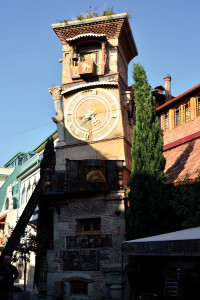
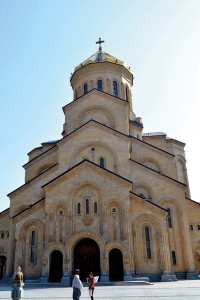
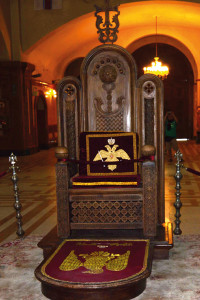
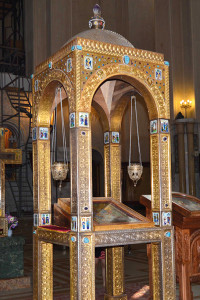
Historical Insight
According to tradition, Stepantsminda, literally "Saint Stephan", was named so after a Georgian Orthodox monk Stephan, who constructed a hermitage at this location on what later became the Georgian Military Highway. It came under the control of a local feudal magnate, the Chopikashvili clan, who were in charge of collecting tolls on travelers in the area in the late 18th century. After the expansion of the Russian Empire into the Kingdom of Georgia in the early 19th century, the people of the region revolted against Russian rule. However, the local lord Gabriel Chopikashvili, son of Kazi-Beg, remained steadfast in his loyalty to Russia and helped to suppress the revolt. In return, he was promoted to officer in the Russian Army. He adopted the surname Kazbegi, and the village under his control was also frequently referred to as "Kazbegi". The name was officially changed to Kazbegi under the Soviet rule in 1925. Gabriel Chopikashvili-Kazbegi's grandson was the famed Georgian writer Alexander Kazbegi, who was born in this town. In 2006, the town reverted to its original name of Stepantsiminda. Stepantsiminda is known for its scenic location in the Greater Caucasus mountains, and is a center for trekkers and mountain climbing. Local attractions include the Kazbegi Museum and Ethnographic Museum in town, and the Gergeti Trinity Church outside of town, as well as Mount Kazbegi itself and the alpine meadows and forests of the surrounding Kazbegi Nature Reserve.Border crossing point to Russia
There is the Georgian part "Kazbegi" border crossing point to the Russian Federation "Kazbegi" - "Verchni Lars". The crossing was opened on 1st March 2010. It works during the winter (1st November - 28th February) from 7 am till 7pm and in summer (1st March - 31st October) from 6 am till 10pm. The customs are multilateral, for all citizens of the World. The crossborder road is in a mountain tunnel, so it is impossible to cross the border on foot.How to get to Kazbegi
From 8am to 6pm, every hour a local shuttle starts from Didube Station in Tbilisi (Didube underground) and every hour from the main square in Stepantsminda near cafe "Shorena". You can order personal private and group transfers with online booking and payment in Kazbegi- Transfer Company.Music of Georgia
Georgia has a rich and vibrant musical tradition, primarily known for its early development of polyphony. Georgian polyphony is based on three vocal parts, a unique tuning system based on perfect fifths, and a harmonic structure rich in parallel fifths and dissonances. Each region in Georgia has its own traditional music; Persian influenced drones and ostinato-like soloists in the east, complex improvised harmonies in the west, and solid moving chords in Svanetie.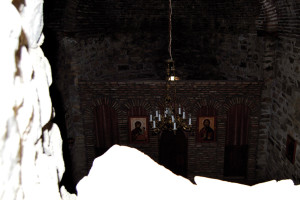
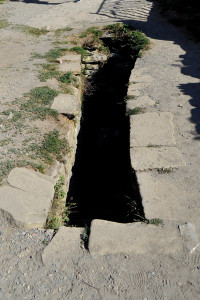
Cuisine
The Georgian signature dish is khinkali with beer. Georgian cuisine and wine have evolved through the centuries, adapting traditions in each era. One of the most unusual traditions of dining is supra, or Georgian table, which is also a way of socialising with friends and family. The head of supra is known as tamada. He also conducts the highly philosophical toasts, and makes sure that everyone is enjoying themselves. Various historical regions of Georgia are known for their particular dishes: for example, khinkali (meat dumplings), from eastern mountainous Georgia, and khachapuri, mainly from Imereti, Samegrelo and Adjara. In addition to traditional Georgian dishes, the foods of other countries have been brought to Georgia by immigrants from Russia, Greece, and recently China.Sport in Georgia
The most popular sports in Georgia are football, basketball, rugby , wrestling, judo, and weightlifting. Historically, Georgia has been famous for its physical education; the Romans were fascinated with Georgians' physical qualities after seeing the training techniques of ancient Iberia. Wrestling remains a historically important sport of Georgia, and some historians think that the Greco-Roman style of wrestling incorporates many Georgian elements. Within Georgia, one of the most popularized styles of wrestling is the Kakhetian style. There were a number of other styles in the past that are not as widely used today. For example, the Khevsureti region of Georgia has three different styles of wrestling. Other popular sports in 19th century Georgia were polo, and Lelo, a traditional Georgian game later replaced by rugby . The first and only race circuit in the Caucasian region is located in Georgia. Rustavi International Motorpark originally built in 1978 was re-opened in 2012 after total reconstruction costing $20 million. The track satisfies the FIA Grade 2 requirements and currently hosts the Legends car racing series and Formula Alfa competitions. Basketball was always one of the notable sports in Georgia, and Georgia had a few very famous Soviet Union national team members, such as Otar Korkia, Mikhail Korkia, Zurab Sakandelidze and Levan Moseshvili. Dinamo Tbilisi won the prestigious Euroleague competition in 1962. Georgia had five players in the NBA: Vladimir Stepania, Jake Tsakalidis, Nikoloz Tskitishvili, Tornike Shengelia and current Milwaukee Bucks member Zaza Pachulia. Other notable basketball players are two times Euroleague champion Giorgi Shermadini and Euroleague players Manuchar Markoishvili and Viktor Sanikidze. Sport is regaining its popularity in the country in recent years. Georgia national basketball team qualified to EuroBasket during the last three tournaments since 2011.Gudauri - most visited ski resort of Georgia
Tourism is an increasingly significant part of the Georgian economy. About a million tourists brought US$313 million to the country in 2006. According to the government, there are 103 resorts in different climatic zones in Georgia. Tourist attractions include more than 2000 mineral springs, over 12,000 historical and cultural monuments, four of which are recognised as UNESCO World Heritage Sites (Bagrati Cathedral in Kutaisi and Gelati Monastery, historical monuments of Mtskheta, and Upper Svaneti). Georgia is developing into an international transport corridor through Batumi and Poti ports, an oil pipeline from Baku through Tbilisi to Ceyhan, the Baku-Tbilisi-Ceyhan pipeline (BTC) and a parallel gas pipeline, the South Caucasus Pipeline. Since coming to power Saakashvili administration accomplished a series of reforms aimed at improving tax collection. Among other things a flat income tax was introduced in 2004. As a result, budget revenues have increased fourfold and a once large budget deficit has turned into surplus. As of 2001, 54 percent of the population lived below the national poverty line but by 2006 poverty decreased to 34 percent. In 2005, the average monthly income of a household was GEL 347 (about USD $200). 2013 estimates place Georgia's nominal GDP at US$15.98 billion. Georgia's economy is becoming more devoted to services now representing 65 percent of GDP), moving away from the agricultural sector (10.9 percent). In regards to telecommunication infrastructure, Georgia is ranked second to last among its bordering neighbors in the World Economic Forum's Network Readiness Index (NRI) – an indicator for determining the development level of a country’s information and communication technologies. Georgia ranked number 60 overall in the 2014 NRI ranking, up from 65 in 2013.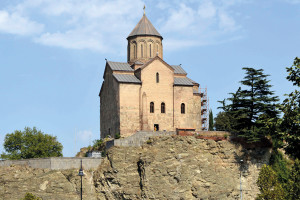
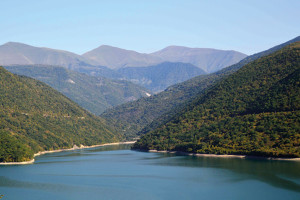
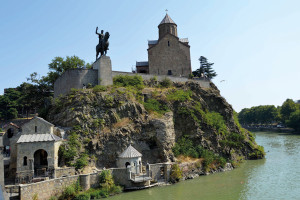 Photographs By Bijumon and Remo Philips
Photographs By Bijumon and Remo Philips
Leave a reply
Reply To:
Name - Reply Comment
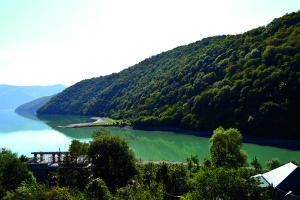
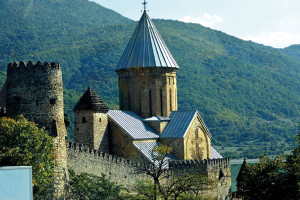
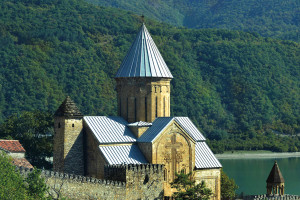
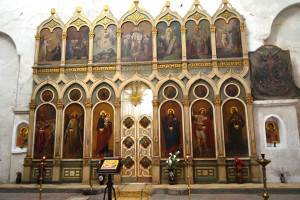
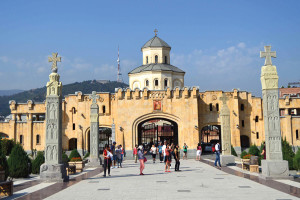
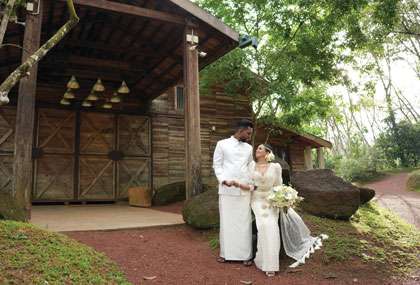
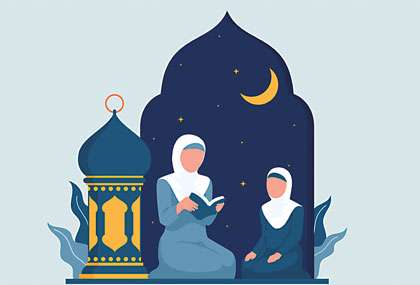
Comments